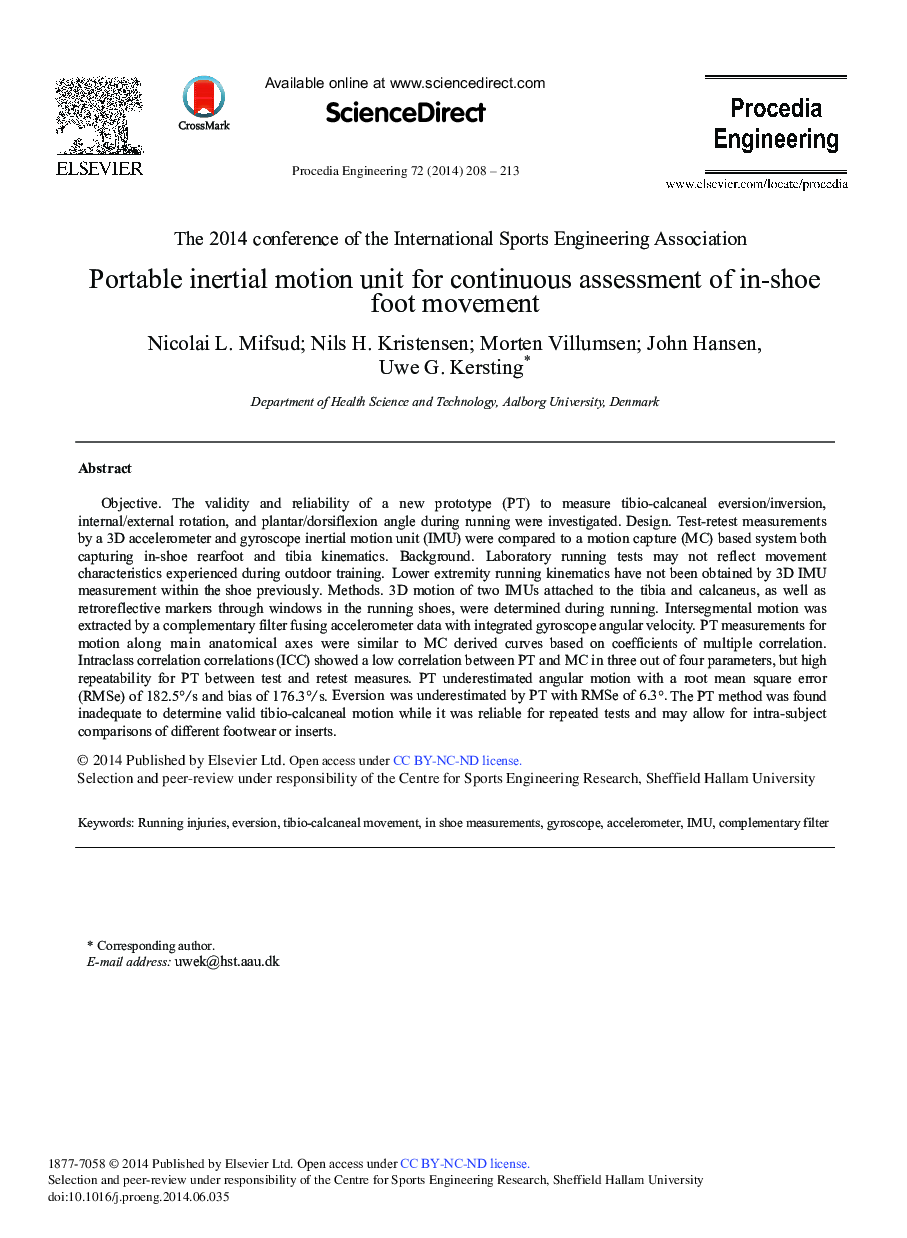| Article ID | Journal | Published Year | Pages | File Type |
|---|---|---|---|---|
| 858951 | Procedia Engineering | 2014 | 6 Pages |
ObjectiveThe validity and reliability of a new prototype (PT) to measure tibio-calcaneal eversion/inversion, internal/external rotation, and plantar/dorsiflexion angle during running were investigated. Design. Test-retest measurements by a 3D accelerometer and gyroscope inertial motion unit (IMU) were compared to a motion capture (MC) based system both capturing in-shoe rearfoot and tibia kinematics. Background. Laboratory running tests may not reflect movement characteristics experienced during outdoor training. Lower extremity running kinematics have not been obtained by 3D IMU measurement within the shoe previously. Methods. 3D motion of two IMUs attached to the tibia and calcaneus, as well as retroreflective markers through windows in the running shoes, were determined during running. Intersegmental motion was extracted by a complementary filter fusing accelerometer data with integrated gyroscope angular velocity. PT measurements for motion along main anatomical axes were similar to MC derived curves based on coefficients of multiple correlation. Intraclass correlation correlations (ICC) showed a low correlation between PT and MC in three out of four parameters, but high repeatability for PT between test and retest measures. PT underestimated angular motion with a root mean square error (RMSe) of 182.5°/s and bias of 176.3°/s. Eversion was underestimated by PT with RMSe of 6.3°. The PT method was found inadequate to determine valid tibio-calcaneal motion while it was reliable for repeated tests and may allow for intra-subject comparisons of different footwear or inserts.
